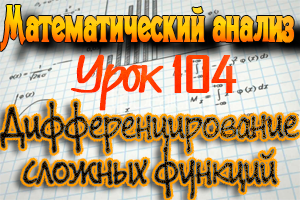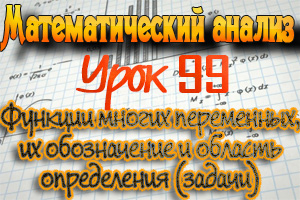Рассмотрим случай, когда при  или
или  функция
функция  представляет отношение двух бесконечно малых величин (случай
представляет отношение двух бесконечно малых величин (случай  ).
).
Этот случай нахождения предела функции имеет особенно важное значение. Как будет выяснено впоследствии, нахождение предела отношения бесконечно малого изменения функции к бесконечно малому изменению аргумента является одним из основных средств для изучения функций.
Пример 1. Найти следующие пределы:
1)  ;
;
2)  ;
;
З)  ;
;
4)  .
.
Решение. Вначале убеждаемся, что предел функции нельзя найти непосредственной подстановкой, что при указанном изменении аргумента она представляет отношение двух бесконечно малых величин (случай  ); затем делаем преобразования, чтобы сократить дробь на множитель, стремящийся к нулю.
); затем делаем преобразования, чтобы сократить дробь на множитель, стремящийся к нулю.
1) Раскладываем знаменатель на множители и сокращаем дробь на  :
:

Здесь нет сокращения на нуль, что никогда недопустимо. Согласно определению предела функции аргумент  стремится к своему предельному значению 2, никогда с ним не совпадая. Поэтому здесь
стремится к своему предельному значению 2, никогда с ним не совпадая. Поэтому здесь  .
.
Вообще, если надо найти предел функции при  , то необходимо помнить, что
, то необходимо помнить, что  не принимает значения
не принимает значения  , m. е. что
, m. е. что  и
и  .
.
2) Раскладываем числитель и знаменатель дроби на множители, как квадратные трехчлены, по формуле
 , где
, где  и
и  - корни трехчлена. Затем сокращаем дробь на
- корни трехчлена. Затем сокращаем дробь на  :
:

3) Сократим дробь, разделив на
 числитель и знаменатель в отдельности:
числитель и знаменатель в отдельности:
Вообще, если надо найти предел дроби, числитель и знаменатель которой многочлены, обращающиеся в нуль в предельной точке
 , то согласно теореме Безу оба многочлена разделятся без остатка на
, то согласно теореме Безу оба многочлена разделятся без остатка на  , т. е. такую дробь всегда можно сократить на
, т. е. такую дробь всегда можно сократить на  .
.4) Разложим числитель и знаменатель на множители и сократим дробь на
 :
:
Пример 2. Найти следующие пределы:
1) 
2) 
3) 
4) ![\displaystyle \underset{x \to 1}{\textrm{lim}}\frac{1-\sqrt{x}}{1-\sqrt[3]{x}}.](https://math-helper.net/wp-content/plugins/latex/cache/tex_f837dbd5cbbb2994f6028fe9807d15af.gif)
Решение. Выяснив вначале, что при указанном изменении аргумента данная функция представляет отношение двух бесконечно малых величии (случай  ), преобразуем затем дробь так, чтобы сократить ее на множитель, стремящийся к нулю:
), преобразуем затем дробь так, чтобы сократить ее на множитель, стремящийся к нулю:
1) уничтожаем иррациональность в числителе путем умножения числителя и знаменателя на  , затем сокращаем дробь на
, затем сокращаем дробь на  :
:
 ;
;
2) умножаем числитель и знаменатель на произведение  и затем сокращаем дробь на
и затем сокращаем дробь на  :
:

3) умножаем числитель и знаменатель на
 и сокращаем дробь на
и сокращаем дробь на  :
:
4) умножаем числитель и знаменатель на произведение
![\displaystyle (1+\sqrt{x})(1+\sqrt[3]{x}+\sqrt[3]{x^{2}})](https://math-helper.net/wp-content/plugins/latex/cache/tex_92cc35f88b0148fad67786ac6ff9eb5c.gif) затем сокращаем дробь на
затем сокращаем дробь на  :
:![\displaystyle \underset{x \to 1}{\textrm{lim}}\frac{1-\sqrt{x}}{1-\sqrt[3]{x}}=\underset{x \to 1}{\textrm{lim}}\frac{(1-x)(1+\sqrt[3]{x}+\sqrt[3]{x^{2}})}{(1-x)(1+\sqrt{x})}=\underset{x \to 1}{\textrm{lim}}\frac{1+\sqrt[3]{x}+\sqrt[3]{x^{2}}}{1+\sqrt{x}}=\frac{3}{2}.](https://math-helper.net/wp-content/plugins/latex/cache/tex_0b0ab69b2f6f660f744082f49dec3616.gif)
Иначе можно решить эту задачу путем замены переменной. Полагая
 , получим
, получим  , когда
, когда  и
и![\displaystyle \underset{x \to 1}{\textrm{lim}}\frac{1-\sqrt{x}}{1-\sqrt[3]{x}}=\underset{x \to 1}{\textrm{lim}}\frac{1-t^{3}}{1-t^{2}}=\underset{x \to 1}{\textrm{lim}}\frac{(1-t)(1+t+t^{2})}{(1-t)(1+t)}=\underset{x \to 1}{\textrm{lim}}\frac{1+t+t^{2}}{1+t}=\frac{3}{2}.](https://math-helper.net/wp-content/plugins/latex/cache/tex_61b28d9f9edb1ff25f6fb7199a6ba207.gif)
Пример 3. Найти следующие пределы:
1) 
2) 
3) 
4) 
Решение. Устанавливаем, что данная функция не определена в предельной точке, что при заданном изменении аргумента она представляет отношение двух бесконечно малых величин (случай  ). После этого подвергаем функцию преобразованиям с тем, чтобы использовать 1-й замечательный предел:
). После этого подвергаем функцию преобразованиям с тем, чтобы использовать 1-й замечательный предел:  (
( —радианная мера угла).
—радианная мера угла).
1)  )
)
2) Применяем тригонометрическую формулу  ;
;

3) Здесь, чтобы использовать 1-й замечательный предел, сделаем замену переменной:
 . Тогда при
. Тогда при  будет
будет  и
и
4) Полагая
 , получим
, получим  ,
,  когда
когда  , и
, и







